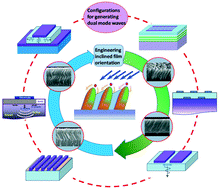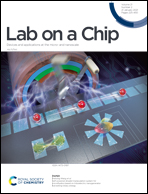Engineering inclined orientations of piezoelectric films for integrated acoustofluidics and lab-on-a-chip operated in liquid environments
Abstract
Different acoustic wave modes are required for effective implementation of biosensing and liquid actuation functions in an acoustic wave-based lab-on-a-chip. For efficient sensing in liquids, shear waves (either a thickness-shear bulk wave or a shear-horizontal surface acoustic wave) can achieve a high sensitivity, without significant loss of acoustic wave energy. On the other hand, longitudinal bulk waves or out-of-plane displacement waves (such as Rayleigh waves) enable efficient sampling functions and liquid manipulation. However, there are significant challenges in developing a lab-on-a-chip to efficiently generate multiple wave modes and perform both these functions on a single piezoelectric substrate, especially when a single crystalline orientation is available. This paper highlights the latest progress in the theories and techniques to deliver both sensing and microfluidic manipulation functions using engineered inclined-angled piezoelectric films, allowing for the simultaneous generation of longitudinal (or Rayleigh) and thickness-shear bulk (or shear-horizontal surface acoustic) waves. Challenges and theoretical constraints for generating various wave modes in the inclined films and techniques to efficiently produce inclined columnar and inclined crystalline piezoelectric films using sputtering deposition methods are presented. Applications of different wave modes in the inclined film-based lab-on-chips with multiple sensing and acoustofluidic functions are also discussed.



 Please wait while we load your content...
Please wait while we load your content...